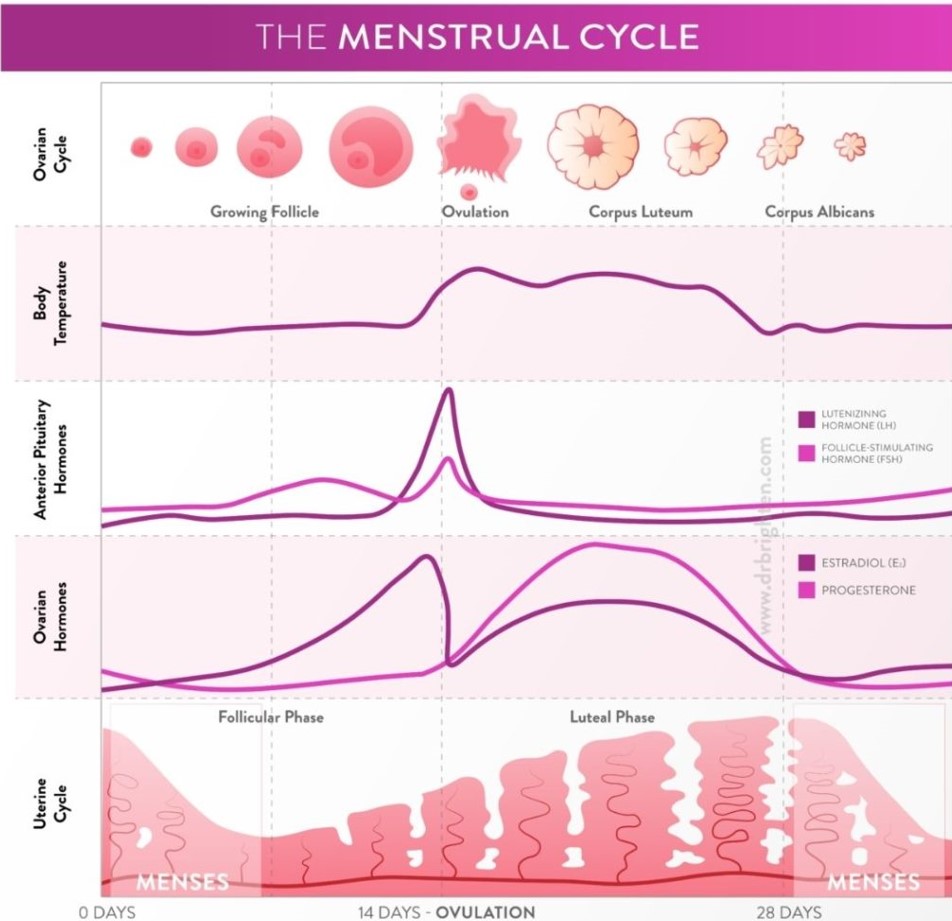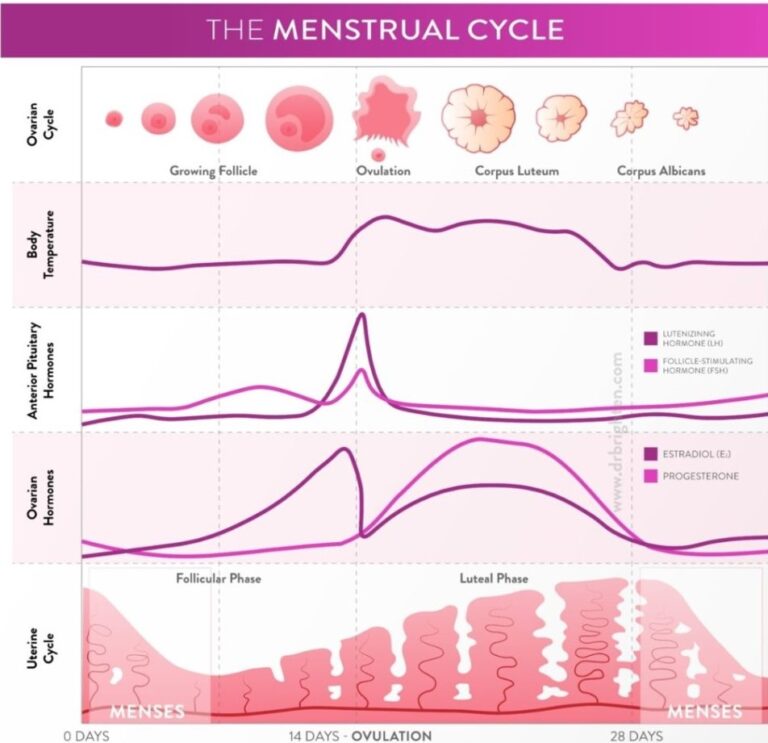
For many women, their menstrual cycle is a mystery—something they weren’t fully taught or simply forgot after middle school health class. However, your cycle is more than just a monthly inconvenience; it’s now considered the fifth vital sign, providing valuable clues about your overall health.
Cycle tracking is a simple yet powerful tool that can help you understand your body, identify warning signs of potential health issues, and prepare for life transitions like perimenopause.
The Normal Menstrual Cycle
A typical menstrual cycle lasts 21–35 days, with an average of 28 days, and can be divided into four distinct phases:
1. Follicular Phase (Days 1–13)
- Begins on the first day of menstruation and lasts until ovulation.
- Hormones: Estrogen begins to rise, stimulating the growth of follicles in the ovaries.
- Symptoms: Energy levels may increase, mood often improves, and you may feel more motivated and focused.
2. Ovulation (Day 14, but varies)
- The release of a mature egg from the ovary.
- Hormones: A surge in luteinizing hormone (LH) triggers ovulation, while estrogen peaks.
- Symptoms: Increased cervical mucus (clear, stretchy, egg white consistency), heightened libido, and possible mild pelvic pain (mittelschmerz).
3. Luteal Phase (Days 15–28)
- Occurs after ovulation and lasts until menstruation.
- Hormones: Progesterone rises, preparing the uterine lining for potential implantation. If pregnancy doesn’t occur, progesterone drops.
- Symptoms: Energy may decline, mood swings or irritability, bloating, and breast tenderness are common.
4. Menstruation (Days 1–7)
- Shedding of the uterine lining if pregnancy does not occur.
- Hormones: Both estrogen and progesterone are low at the start but gradually rise as the follicular phase begins.
- Symptoms: Cramps, fatigue, lower back pain, and mood changes are normal.
What’s Normal?
Normal Ranges
- Cycle length: 21–35 days
- Period duration: 3–7 days
- Blood flow: 25–80 milliliters (about 3–5 tampons/pads per day)
- Symptoms: Mild cramping, bloating, and mood changes are common but should not be debilitating.
Warning Signs
- Cycles shorter than 21 days or longer than 35 days.
- Heavy bleeding requiring more than 7 pads/tampons per day.
- Severe cramps that interfere with daily life.
- Spotting between periods.
- Missed periods without pregnancy.
- Sudden changes in cycle regularity, especially after age 35.
If you’re experiencing these signs, it’s essential to track your symptoms and consult a healthcare provider.
How to Track Your Cycle
Tracking your cycle doesn’t require fancy tools—you can use:
- Pen and paper: Write down the first day of your period, how long it lasts, and any symptoms.
- Apps: Apps like Clue, Flo, and Period Tracker make it easy to log cycle details and predict ovulation.
- Journals: Record physical and emotional symptoms daily for a more comprehensive view.
Cycle tracking is especially important for women over 35 as subtle changes can signal the onset of perimenopause. These early insights allow for interventions that can ease the transition and improve health outcomes.
The Importance of Cycle Tracking in Perimenopause
During perimenopause, hormonal fluctuations can cause cycles to become irregular or bring about new symptoms. Common perimenopause symptoms include:
- Irregular periods.
- Hot flashes or night sweats.
- Mood swings or increased anxiety.
- Sleep disturbances.
- Weight gain or bloating.
Tracking these changes provides critical information to share with your doctor, helping them tailor treatments to your needs.
Further Resources and Reading
- The Period Repair Manual by Lara Briden
- Taking Charge of Your Fertility by Toni Weschler
- The Fifth Vital Sign by Lisa Hendrickson-Jack
- Articles:
Cycle Tracking and Holistic Care at Antigravity Wellness
At Antigravity Wellness, we specialize in helping women over 35 navigate the complexities of perimenopause and menopause. Through our holistic approach and expertise in hormone health, we provide solutions for irregular cycles, hormone imbalances, and related symptoms.
If you’re experiencing perimenopause symptoms or want to understand your cycle better, schedule a brief initial consult today to take the first step toward better health.




